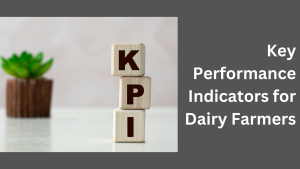
Key Performance Indicators (KPIs) might sound like a concept reserved for corporate boardrooms. But they’re vital for dairy farmers looking to streamline operations, improve productivity, and boost profitability. By identifying your agribusiness’s most important metrics, you can better understand its performance and make data-driven decisions that support long-term success.
This guide will help you understand KPIs, explore their significance for dairy farming, and provide practical tips on how to set, track, and leverage them to optimize your agribusiness—whether for financial health, production, or team efficiency.
What Are KPIs, and Why Do They Matter?
Key Performance Indicators (KPIs) are measurable values that reflect the success of a business in reaching its objectives. For a dairy farm, KPIs provide a way to monitor everything from milk production to farm expenditures at a glance, allowing you to focus on actionable priorities instead of sorting through piles of reports.
Think of KPIs as your business’s compass. They will guide you toward operational goals and highlight areas needing improvement. By selecting just five or six clear and relevant KPIs, you can simplify your decision-making process and monitor progress efficiently over time.
KPIs aren’t static; they evolve as your objectives and market conditions change, challenging you to continue improving your business performance.
Categories of Agribusiness KPIs
For dairy farming, KPIs typically fall into a few key categories. Here’s an overview of some of the most common and useful ones:
1. Team KPIs
Your team is your biggest asset. Effective management starts with tracking performance and engagement.
1. Training days per year – Tracks employee development and skill growth.
2. Employee turnover (three-year average) – A marker of team stability.
2. Product KPIs
Monitoring production quality and volume is crucial in dairy farming.
1. Somatic cell count – A low count indicates healthier herds and better milk quality.
2. Production per hectare – Tracks how efficiently your land is utilized.
3. Financial KPIs
The numbers tell the story when it comes to sustainability and profitability.
1. Farm Working Expenditure (FWE) per KgMS – Measures operational efficiency.
2. Profit margin – The clearest indication of business success.
3. Debt-to-equity ratio – Tracks your financial leverage.
4. Return on total asset value – Judges how effectively assets translate to profit.
4. Livestock KPIs
Healthy livestock equals high-quality production.
1. Calving spread – Determines efficiency during calving season.
2. Days in lactation – Monitors productivity levels.
3. In-calf rate – Reflects successful reproduction rates.
5. Health and Safety KPIs
A safe workplace protects your most valuable asset—your team.
1. Accidents reported – A raw count of workplace incidents.
2. Near-miss incidents – Tracks potential hazards before they become accidents.
3. Off-work days – Measures downtime caused by workplace injuries.
These KPIs bring actionable insights and form a culture of accountability, productivity, and continuous improvement across all aspects of your agribusiness.
How to Set and Measure KPIs
For KPIs to have real value, they should align with your business objectives, be measurable, and be reviewed regularly. Here’s what you need to do.
Step 1: Align KPIs with Your Goals
Define your short- and long-term business goals. Are you aiming to maximize milk production, cut costs, or improve herd health? Your chosen KPIs need to reflect these priorities.
Step 2: Keep It Simple
Have five or six meaningful KPIs that provide the most precise insights into your farm’s performance.
Step 3. Make Them Measurable and Time-Bound
Use tangible, quantifiable metrics that can be tracked consistently. Regular evaluations (monthly, quarterly, or annually) help you identify trends and adjust strategies when necessary.
Step 4. Analyse Variance
Track actual performance against your projected budgets. For instance, create a spreadsheet comparing actual and budgeted figures side-by-side, with a variance column to show discrepancies.
Step 5: Adjust and Challenge
A sound KPI system is dynamic. Once you consistently hit your goals, challenge yourself with new benchmarks to drive further progression.
Benchmarking – Why It’s Essential
Benchmarking takes KPI tracking to the next level by comparing your farm’s performance, not just year over year, but also with regional or industry-wide standards.
Internal Benchmarking
Compare your current data with past performance to assess improvements or identify areas that need attention. Are you spending less on farm working expenditure this year compared to last year? Internal comparisons reveal whether your strategies are working.
Industry Benchmarking
Compare your operations to those of other farms through trusted platforms like Figured or DairyNZ DairyBase. These tools provide a broader perspective on your agribusiness’s position relative to competitors.
At CMK, we work closely with our clients to compile and review KPI data and benchmark it against previous years and industry norms.
Elevate Your Dairy Farm Performance
Your KPIs shouldn’t just be numbers on a spreadsheet but the building blocks of a progressive, sustainable dairy farm. Focusing on the right KPIs can streamline decision-making and improve productivity.
If you want to unlock your dairy farm’s full potential, CMK can help you identify and track relevant KPIs tailored to your unique business needs. From gathering your numbers to benchmarking and ongoing support, our dedicated team is here to guide you every step of the way.


